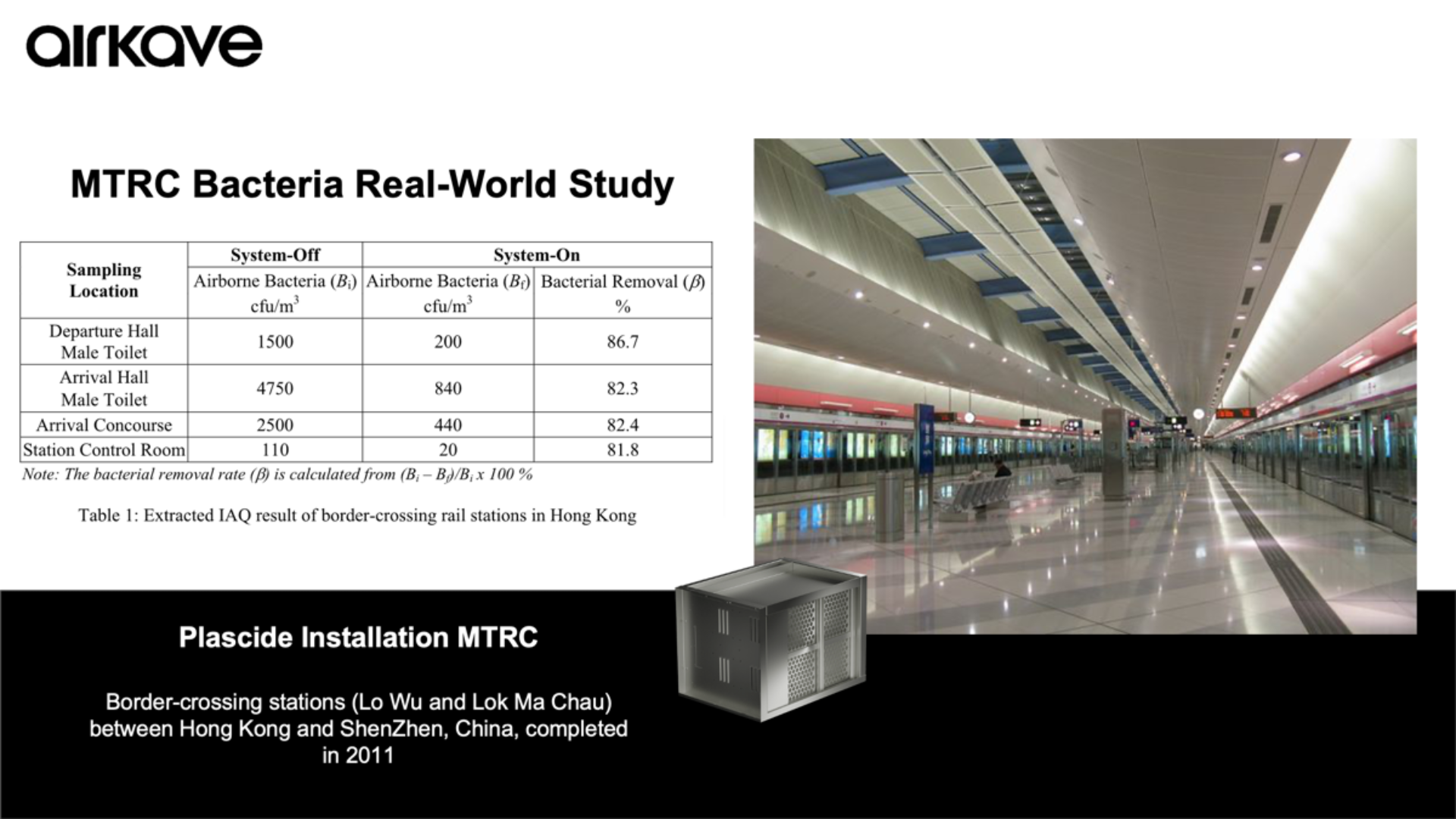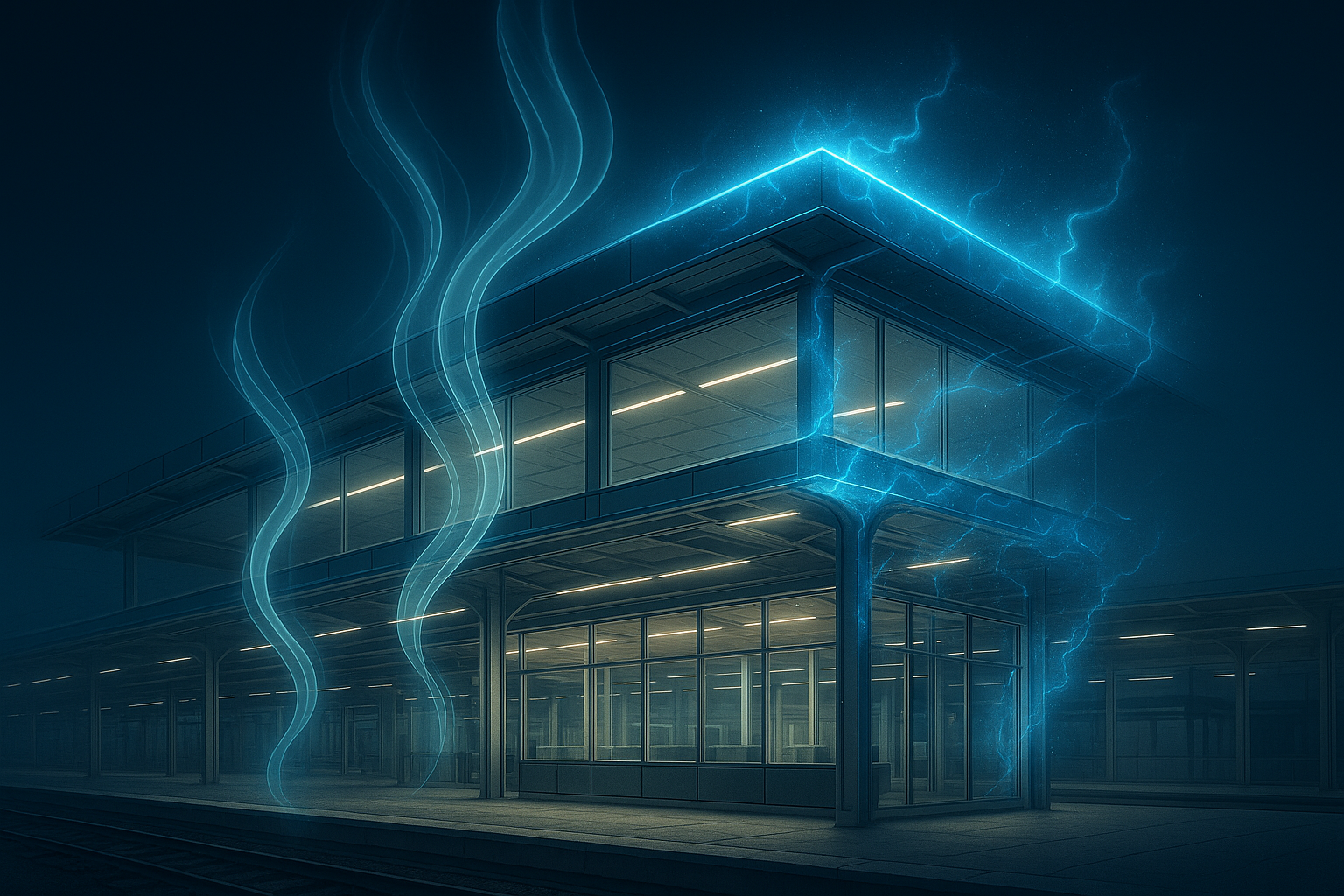Airborne transmission of viruses and bacteria is now recognized as one of the most significant challenges for public health. The global spread of SARS-CoV-2 placed indoor air quality at the center of attention, proving that traditional solutions like filters and chemicals are not enough on their own. Buildings need active, real-time protection.
At KAVE Industries, we believe plasma—the fourth state of matter—offers that protection. Through our airKAVE platform, we’ve advanced plasma from research to deployment, delivering scalable technology that keeps people safer in the environments where they live, work, and travel.
Plasma and Pathogen Inactivation
Plasma is a partially ionized gas composed of ions, electrons, and neutral particles. When applied to air disinfection, plasma directly disrupts the proteins and nucleic acids of microorganisms, rapidly inactivating them.
Research has shown that plasma achieves over 95% disinfection efficacy within milliseconds, compared to much slower technologies like UV lamps
This speed is critical in real-world environments where pathogens like SARS-CoV-2 can accumulate in the air within seconds of being exhaled.
For a detailed technical explanation of plasma generation, disinfection rates, and system design, see the original research paper: Use of Plasma Technology for Air Disinfection in Buildings (2011) PDF link.
Plasma + Ventilation: A Winning Equation
Air safety depends on two factors:
- Device efficacy rate — how quickly plasma neutralizes pathogens.
- Air changes per hour (ACH) — how often air cycles through the system.
Plasma systems paired with optimized ACH can reduce airborne contaminants by over 90%, even in crowded environments
This makes them ideal for healthcare, transit hubs, classrooms, and workplaces where the risk of SARS-CoV-2 and future pathogens is highest.
Real-World Evidence
Plasma air disinfection is not just a theory. In Hong Kong, more than 50 plasma units were deployed in busy border-crossing railway stations. Independent testing confirmed 80%+ bacterial removal during peak passenger flow
Staff also noted fresher air quality and odor reduction — a welcome side effect of plasma chemistry.
This real-world validation shows that plasma is not only effective in controlled laboratories, but also in complex, high-traffic environments.

From Research to airKAVE
At KAVE Industries, we’ve built on this foundation with our airKAVE platform — integrating non-thermal plasma modules into HVAC and air-handling systems.
airKAVE delivers:
- Rapid disinfection of airborne pathogens, including coronaviruses like SARS-CoV-2.
- Chemical-free protection, with no harmful residues or ozone dependence.
- Scalable deployment across healthcare, commercial, and transit infrastructure.
By bringing plasma from scientific research into practical systems, airKAVE is redefining indoor air safety.
Looking Ahead
The lesson from SARS-CoV-2 is clear: protecting indoor environments is not optional. Airborne pathogens will continue to pose challenges, and we must build resilience into the very infrastructure we rely on.
Plasma is not just a tool for today — it’s a platform for the future. From air disinfection with airKAVE to surface safety, water treatment, and even fusion energy, plasma is the foundation of the next generation of clean technologies.
For those interested in the underlying science, the full research paper is available here:
Use of Plasma Technology for Air Disinfection in Buildings (2011) — PDF.

.svg)





.png)